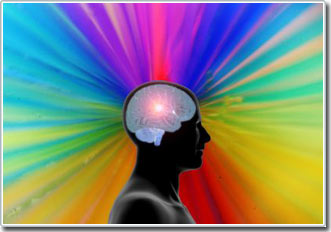Color and language
A new series of research highlights the link between words and perception.
If I tell you my house is the only green house in the street, you know how to find it. Whether the house is blue or navy blue, our common sense of ' green ' means we can convey color. Paul Kay - a researcher at the University of California at Berkeley - wants to know exactly what that means to our brains. Are we thinking of green or words used to express it? Do the words we use affect the way we see ourselves in color? According to Key, these two factors can be closely linked together inside our brain.
Recently Key has co-authored two studies that his research team conducted to determine how our color perception is influenced by language. First, the goal is to determine whether children have not developed their language skills using their left or right brain to identify colors.Research has clearly demonstrated that adults use the left hemisphere to recognize colors; This is also the part of the brain that humans mainly use to process language.

Color and language: Is language more nuanced for our color perception?Or does it affect the other way?(Photo: James Steidl / Homemade)
Researchers compared the ability of infants to respond to color changes on both sides of their visual areas compared to adults. The results show that the process of recognizing color starts from the right side of the brain and how it passes to the left through the evolution of the language.
The second study involved subjects who were placed with fMRI (magnetic resonance scanner) to measure which areas of the brain were affected giving specific color assessments. When easy-to-name colors (red, blue, green) appear, the subject's brain regions for retrieving words exhibit more agility when they are received with more complex colors. (purple, dark blue). Key believes it is because our color perception is closely linked to our language.
Last year, when presented in the New Yorker , John Colapinto visited the Pirahã tribe in northwestern Brazil. He went with Dan Everett, an American linguist, who studied the tribe for three decades. The Pirahas use a particularly strange language, which has nothing to do with the languages that exist today. One of the exceptional characteristics of this language is that it has no language associated with colors. The Pirahas use descriptions to convey the meaning of colors:
"So if you show them a red cup, they'll say, 'This looks like blood,' Everett said. " Or they might say, 'This is like a vrvcum' - a fruit. Local berries they use to extract red dye. '"
This is the case where colors and languages are literally one and the same. For the Pirahas, the connection is brought to the end according to logic. We still do not understand how the connection between the last two factors is, or how it affects our subjectivity, but further research will bring us closer to the answers. than.
- Language changes the way you look at life
- Language influences color vision
- Programming language history
- Restoring ancient language
- The 'new world' scenario if humans speak a common language
- Marvel at the world's least worded language with only 123 words
- Gloves turn speech language into words
- What language did the ancients use?
- Oysters with language like?
- Race against time to preserve language
- Human language derives from the song of apes and birds
- Addiction messaging is not good for language skills
 'Fine laughs' - Scary and painful torture in ancient times
'Fine laughs' - Scary and painful torture in ancient times The sequence of numbers 142857 of the Egyptian pyramids is known as the strangest number in the world - Why?
The sequence of numbers 142857 of the Egyptian pyramids is known as the strangest number in the world - Why? History of the iron
History of the iron What is alum?
What is alum?